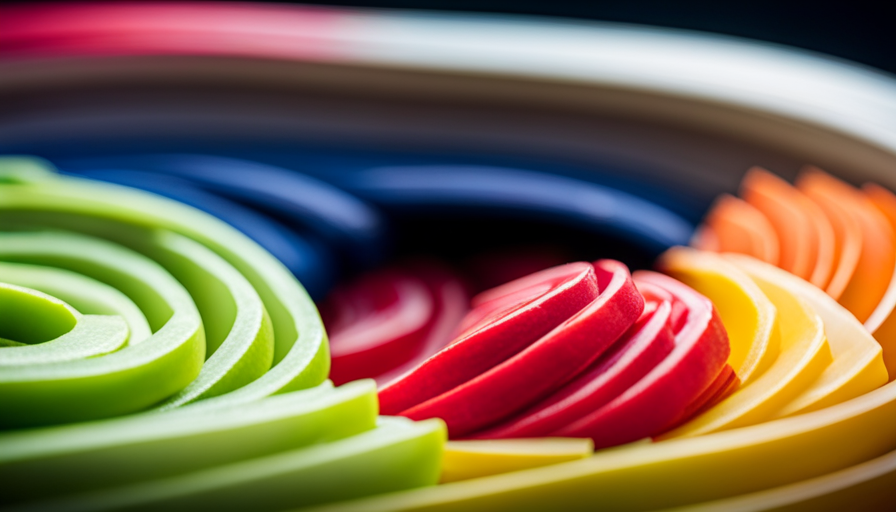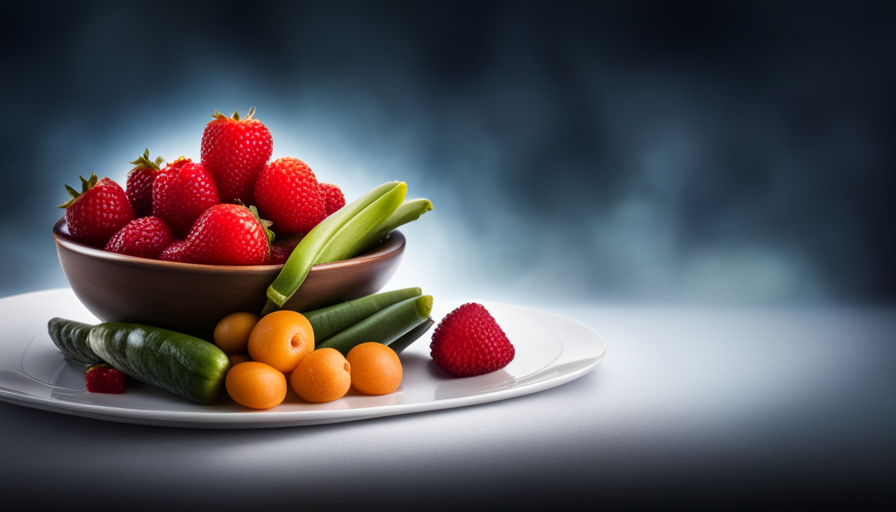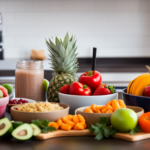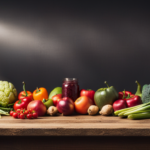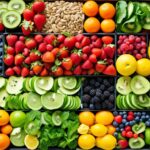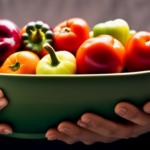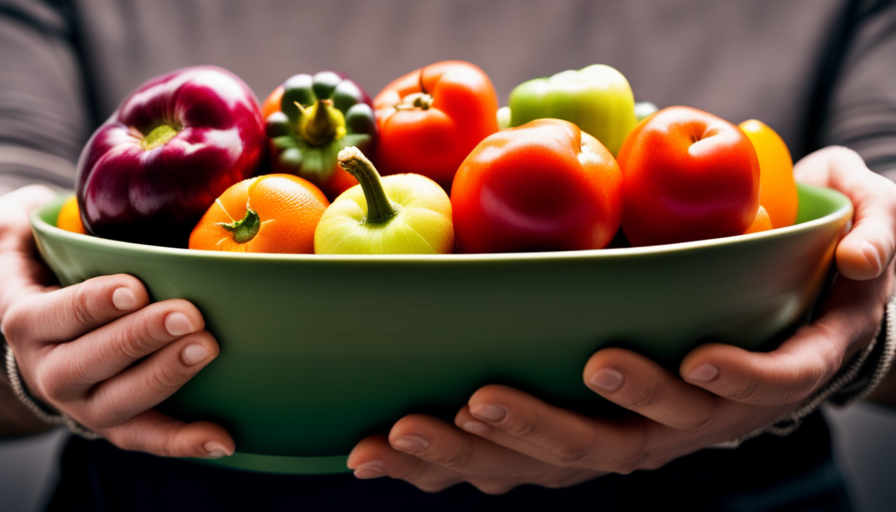Are you looking for a way to jumpstart your path to health and wellness? A meal plan centered around raw foods for detoxification might be the perfect solution.
With natural ingredients, fresh produce, and minimal cooking, this type of diet provides an array of benefits that can help you take charge of your overall wellbeing.
I’m here to provide insight into what a raw food cleanse meal plan is, how it works, and why you should consider giving it a try.
By following this type of dietary approach, you’ll have access to a variety of nutrients found in unprocessed fruits and vegetables as well as nuts and seeds.
It’s also important to note that while some techniques such as juicing or blending are allowed when preparing meals with raw foods, they should never replace whole foods altogether.
By making sure all the components within the meal plan are both nutritious and delicious, you’re setting yourself up for success!
What Is A Raw Food Cleanse Meal Plan?
Raw food cleanse meal plans are becoming increasingly popular for a number of health and wellness benefits. Like the mythical phoenix rising from the ashes, so too is raw food offering an opportunity to revitalize our bodies with natural sources of energy and nutrients. But before you embark on this journey there are some things one should consider in order to ensure your body gets all it needs while avoiding potential risks.
A raw food diet consists primarily of fruits, vegetables, nuts, seeds, sprouts and herbs which have not been cooked or heated above 104°F (40°C). Though these foods are filled with essential vitamins and minerals they can also present certain health risks such as heightened levels of toxic compounds found in plant-based proteins like lectins and saponin. As well as deficiencies in important macronutrients like protein if not properly planned out ahead of time.
When done correctly however, a raw food diet provides many advantages over traditional cooked meals due to their high nutrient content. Increased intake of fresh produce leads to improved digestion, healthy skin, enhanced mental clarity and more sustainable weight loss amongst many other benefits that come with consuming wholefoods straight from nature’s table!
With thoughtful planning and preparation this ancient practice can be adapted into modern life without sacrificing flavor or nutrition.
Benefits Of A Raw Food Cleanse Meal Plan
Being well-nourished and healthy is a priority for many of us, but it can be difficult to make the necessary lifestyle changes in order to achieve that goal. For those looking for more specific guidance, a raw food cleanse meal plan provides just that.
This type of diet has become increasingly popular due to its potential health benefits, which can include increased energy levels and improved digestion. A raw food cleanse meal plan typically consists of fresh fruits and vegetables, nuts and seeds, seaweed, sprouts and other plant-based items that are unprocessed or minimally processed without the use of heat.
Eating this way encourages you to focus on your eating habits by consuming whole foods with an emphasis on nutrient density rather than convenience or taste. In addition to providing ample vitamins and minerals from natural sources, these meals are designed with portion control in mind so you don’t overeat unnecessarily.
The advantages of following such a dietary regimen may not always be immediately apparent; however there is no doubt that adopting some healthier eating habits can do wonders for physical and mental wellbeing over time. The best part is that making small adjustments allows one to find what works best while still enjoying delicious meals as part of their overall nourishment program.
With all this in mind, let’s take a look at what foods are included in a raw food cleanse meal plan?
What Foods Are Included?
Raw food cleanse meal plans are an increasingly popular way to reset one’s body and lifestyle. People often turn to raw foods for their many nutritional benefits, which include higher levels of vitamins, minerals, fibers, antioxidants and healthy fats. After all, the phrase “You are what you eat” is especially true in this case – so let’s take a look at what exactly these meals include!
One thing that makes a raw food diet such a great choice is its variety; there are literally hundreds of different types of raw foods that can be incorporated into your meal plan.
Fruits like apples, oranges and berries as well as vegetables like kale, celery and peppers make up the bulk of most people’s diets.
Nuts, seeds and sprouts also provide important nutrients while promoting optimal health. These raw sources are ideal for maintaining hydration needs and supplying essential vitamins and minerals throughout the day.
In addition to providing plenty of plant-based nutrition, a raw food cleanse meal plan helps rid your body of toxins by eliminating processed items from your daily routine.
This type of diet encourages eating more whole grains instead of refined ones, cutting back on sugar intake and consuming unprocessed proteins like fish or eggs in moderation.
All these components together help create an overall balanced dietary approach that will benefit both mental clarity and physical wellness over time.
So if you’re ready to start breaking some habits with a fresh new outlook on life through a raw food cleanse meal plan – now is the perfect time!
How To Start A Raw Food Cleanse Meal Plan
Shopping for ingredients for your raw food cleanse meal plan is an important first step. I recommend buying organic produce, nuts, seeds and other items that are specifically labelled as raw.
You’ll also want to think ahead and stock up on enough ingredients to last your entire cleanse.
When it comes to meal preparation, it’s important to have the right tools and techniques. Blenders, juicers and food processors are great for creating delicious and nutritious raw food dishes.
Shopping For Ingredients
Shopping for ingredients to prepare your raw food cleanse meal plan can be an exciting, yet overwhelming experience. To make it easier, I recommend starting with a list of the essentials you’ll need and then refining as you go along. This will help keep budgeting in check, but don’t forget that organic produce is always preferable when it comes to creating nutritious meals!
When shopping for all your raw foods, look out for seasonal vegetables; they’re usually fresher and more affordable than those available outside their natural season. Plus, buying local helps support small farmers while reducing your carbon footprint – win-win!
Don’t forget about stocking up on healthy fats such as nuts and seeds, too – these are great sources of energy and essential nutrients like omega 3 fatty acids.
With some smart shopping tips under your belt and a good idea of what you need, you’ll have everything ready for the start of your delicious raw food journey!
Meal Preparation Techniques
Once you’ve done your pre planning and have all the ingredients for your raw food cleanse meal plan, it’s time to get cooking! There are plenty of meal preparation techniques that can help make this process easier.
To start, I recommend trying out some simple recipes with variations on a theme – like different types of salads or smoothies – so you don’t exhaust yourself in the kitchen. Don’t forget to experiment with flavors too; adding herbs and spices is an easy way to spruce up any dish without compromising nutrition. And if you’re feeling adventurous, why not try making nut milk or other snacks?
When creating meals from scratch there are several key elements that need to be incorporated for balanced nutrition: proteins, carbs, fats and fiber. Eating a variety of foods will ensure you get enough of each macro-nutrient throughout the day.
Additionally, look for creative ways to get more vitamins and minerals into each recipe by including fresh fruits or vegetables wherever possible – these might include leafy greens like spinach or kale which contain many essential nutrients we often lack in our diets.
Finally, remember to take things one step at a time as you work towards mastering new meal preparations techniques – having fun in the kitchen is just as important as the end result – after all, enjoying what you eat is half the battle won!
What To Avoid On A Raw Food Cleanse Meal Plan
When it comes to following a raw food cleanse meal plan, there are some foods that should be avoided. Processed foods such as white breads and sugary snacks do not provide your body with any nutrition and can even cause harm. It is best to avoid these altogether while on the cleanse.
Additionally, limiting sugar intake is important for this detoxifying journey as well. Sugar puts stress on the organs of elimination, which a raw food diet seeks to alleviate.
In order to get the most out of your raw food cleanse meal plan, you should also stay away from dairy products, processed oils and meats/fish/poultry. These items can contain unhealthy fats and toxins that could impede progress throughout the cleansing process.
Furthermore, try to keep grains formulated or refined in industrial processes out of your meals too – opt instead for whole-grain options like quinoa or farro if desired.
Sticking to all natural ingredients free from additives is key when following a raw food cleanse meal plan; eating organic whenever possible will help ensure no nasty chemicals enter into the mix either!
To make sure you’re getting enough vitamins and minerals during this time, supplementing with superfood powders may be helpful too.
With this knowledge under our belt, let’s look at how we can choose the healthiest foods for our bodies moving forward…
How To Choose The Healthiest Foods
When it comes to choosing the healthiest foods, it’s important to consider both the nutritional value and the organic quality of the food.
I’m a strong proponent of organic foods, as they are free from pesticides and other toxins that can be harmful to our bodies.
Nutritional value is also key, so you should look for foods that provide the vitamins and minerals your body needs.
Ultimately, the best way to ensure you’re getting the most out of your meals is to opt for organic, nutrient dense foods.
Nutritional Value
When it comes to choosing the healthiest foods, one of the most important things to consider is their nutritional value. Eating a balanced diet is essential for your overall well-being and vitality; so I’m here to help you navigate the waters!
Many whole unprocessed fruits and vegetables are packed with detoxifying properties that will nourish every cell in your body. Not only do they carry powerful antioxidants that can protect against disease, but they’re also rich sources of vitamins and minerals like Vitamin A, C, E & K.
Leafy greens such as spinach, kale or broccoli provide both soluble and insoluble dietary fiber which helps promote healthy digestion while keeping cholesterol levels low. Additionally, dark leafy green veggies are high in iron necessary for red blood cells production.
Whether you’re looking for some energy boosting snacks or planning out your weekly meals – make sure you focus on nutrient dense options as much as possible. Now get out there and eat more mindfully!
Organic Foods
Organic foods are an important part of a healthy diet. Eating organic foods helps to ensure you’re getting the maximum amount of raw nutrition from your food, as well as avoiding any potential contaminants like pesticides or artificial additives.
Organic fruits and vegetables often have higher levels of essential vitamins and minerals than their non-organic counterparts. Plus, they taste better too!
When it comes to eating organic, look for labels that specify certified organic produce – this means all the ingredients used in production were grown without synthetic fertilizers or GMO’s. Your local farmers market is also a great place to find some delicious options if you don’t have access to a grocery store with an extensive selection.
So go ahead, choose organic whenever possible; your body will thank you!
The Importance Of Hydration
Staying properly hydrated is vital when following a raw food cleanse meal plan. Drinking water throughout the day is important for overall health and helps to flush out toxins from our bodies. It’s also essential for weight loss, as it can help reduce hunger levels by creating a feeling of fullness in between meals.
On average, we should be drinking at least 8 glasses of water per day – but this varies depending on an individual’s age and activity level. In addition to regular water intake, consider adding some electrolytes into your daily routine. Electrolyte drinks are especially helpful after periods of exercise or if you’re living in warmer climates where you tend to sweat more often than usual.
Not only do they replenish lost fluids; they also provide minerals such as sodium and potassium which play an important role in regulating bodily functions. It’s easy to overlook how much water we consume during the day – so make sure you keep track of your liquid intake! If possible, carry a reusable bottle with you wherever you go – that way, you’ll always have access to water whenever needed.
Being mindful about proper hydration will ensure that you get all the benefits that come along with staying healthy while enjoying your raw food cleanse meal plan. With commitment and dedication, reaching your fitness goals will no longer seem like an impossible task!
Tips For Sticking To A Raw Food Cleanse Meal Plan
Hydration is key to the success of any healthful eating plan, and a raw food cleanse meal plan is no exception. As the old adage goes: ‘The best way to stay healthy is to drink lots of water.’ Staying hydrated can help you feel energized and even reduce your appetite — two important factors when trying to stick to this type of diet.
But there’s more that goes into sticking with a raw food cleanse than just drinking enough water. Let’s look at some additional strategies for staying on track with this type of meal plan.
There are many practical ways to make sure you stick with a raw food cleanse meal plan. Here are some tips for making it happen:
-
Practical Strategies
-
Meal Prep Ahead of Time: Planning ahead helps ensure that you have healthy meals ready when hunger strikes. This could mean prepping ingredients or planning out what will be part of each day’s meals so that you don’t get stuck in a pinch without something nutritious.
-
Create Grocery Lists: Writing up grocery lists before heading out makes it easier to focus on buying only foods allowed within the parameters of the diet while avoiding “temptation buys” like processed snacks or sweets.
-
Stock Up On Staples: Have all your staples on hand such as nuts, seeds, produce and pantry items that add flavor, texture and nutrients to recipes throughout the week.
Beyond the practical aspects, emotional support is also essential for successful adherence to a raw food cleanse meal plan. It can be challenging going against social norms by choosing plant-based options or turning down certain invitations out of fear they may tempt you off course from your goals. That’s why having loved ones who understand your needs and provide encouragement can go a long way towards helping you succeed with this lifestyle change.
Joining an online community dedicated to eating real foods or finding an accountability partner are other great ways to stay motivated during times when things seem overwhelming or difficult.
With these helpful strategies in place, let us now move on looking at sample recipes for a raw food cleanse meal plan!
Sample Recipes For A Raw Food Cleanse Meal Plan
If you’re looking to experience the potential health benefits of a raw food cleanse, having a meal plan in place is key. To help get you started, I’m sharing some delicious recipes that can be included in your raw food cleanse diet. All of these meals make use of seasonal ingredients and emphasize portion control for optimal dietary balance.
| Recipe | Ingredients | Preparation |
|---|---|---|
| Raw Veggie Bowl | Celery, bell peppers, carrots, cucumbers, sprouts & avocado | Thinly slice all veggies; combine into bowl with lightly dressed sprouts & diced avocado |
| Zesty Avocado Salad | Romaine lettuce, jicama root & cherry tomatoes | Tear romaine lettuce into bite-sized pieces; add thinly sliced jicama root & cherry tomatoes; dress salad with freshly squeezed lime juice & extra virgin olive oil |
| Chia Pudding Parfait | Coconut milk yogurt or almond milk yogurt, chia seeds & fresh fruit | Mix 1/4 cup chia seeds with 2 cups coconut milk yogurt (or almond milk); let sit overnight in fridge; layer parfait with pudding mixture and fresh fruit slices |
These recipes are sure to provide variety while keeping you on track during your raw food cleanse journey. With such wholesome ingredients and easy preparation methods, you can easily whip up nourishing meals on busy days without sacrificing taste or nutrition. Let’s move onto creating a shopping list for stocking up on everything needed for this raw food cleanse meal plan!
Shopping List For A Raw Food Cleanse Meal Plan
When it comes to a raw food cleanse meal plan, I always include plenty of fresh fruits, vegetables, and superfoods.
Fruits are a great source of natural sweetness and vitamins, and are easy to add to smoothies and salads.
Vegetables are essential for any healthy meal plan, and should include a mix of leafy greens and root vegetables.
Superfoods are the powerhouse of any raw food cleanse meal plan; they provide an array of nutrients and can be sprinkled on top of salads and in smoothies.
With a well-stocked shopping list, you’ll be well on your way to a nutritious, energizing raw food cleanse.
Fruits
When it comes to eating habits, fruits are an essential part of any raw food cleanse meal plan. Packing in a good variety of fresh fruit is key for anyone looking to reap the health benefits that come with this type of diet.
Fruits contain important vitamins and minerals, as well as fiber which helps keep your digestive system healthy. Plus they’re loaded with antioxidants that help protect our bodies from damage by free radicals.
I recommend stocking up on a wide range of seasonal fruits like apples, oranges, pears, grapes, bananas and melons; try including some lesser known options too such as passionfruit or starfruit if you can find them! Variety will ensure you get all the nutrients needed for optimal health.
Remember that frozen and canned fruits work just as well when used in smoothies or cooked dishes – so don’t feel restricted to only buying fresh produce. With these tips in mind, make sure you always have plenty of fruity goodness in your kitchen cupboards ready for your next meal!
Vegetables
Vegetables are another important part of any raw food cleanse meal plan. They provide essential vitamins, minerals and fiber to keep your body healthy and running at its best.
To make sure you’re getting the full range of nutrients, I recommend including a variety of vegetable varieties like:
- Leafy greens (spinach, kale, collards)
- Root vegetables (carrots, potatoes, beets)
- Cruciferous veggies (cauliflower, broccoli)
And don’t forget about fresh herbs too – they can add some amazing flavor to dishes while providing key micronutrients!
Having frozen or canned veggies on hand is also handy for when you need them in a pinch.
With these tips in mind, make sure your kitchen cupboards are always stocked with plenty of veggie goodness ready to go!
Superfoods
In addition to the veggies discussed earlier, superfoods are another great way to add nutrition and flavor to your raw food cleanse meal plan.
Superfoods are nutrient-rich foods that have been linked to improved health outcomes, such as increased energy levels and a reduced risk of chronic disease.
Examples include: chia seeds, hemp seeds, goji berries, seaweed, maca powder and spirulina.
You can find these at most grocery stores or online from sustainable sources like organic farmers markets or co-ops.
Plus, they’re easy to incorporate into recipes – just sprinkle them on salads or blend them into smoothies for an extra nutritional kick!
So don’t forget to stock up on some of these superfoods next time you shop for your raw food cleanse meals.
With their amazing benefits, they’re definitely worth adding to any diet!
Meal Prep Ideas For A Raw Food Cleanse Meal Plan
Now that you have your shopping list and all the ingredients needed for a raw food cleanse, it’s time to start prepping! Meal planning is crucial for this type of diet since everything must be eaten uncooked. For maximum benefit from any detox or cleanse plan, portion control is key.
Take Leslie as an example – she planned ahead and was able to stick with her raw food cleanse meal plan by breaking down the recipes into individual servings. She also added a few snacks throughout the day like sliced cucumber and almond butter on celery sticks so she didn’t feel deprived while doing her cleanse. By keeping things simple, Leslie was able to stay focused on her goal without feeling overwhelmed.
Meal prep doesn’t just stop at portioning out meals either; if you take some extra time before starting your program, you can save yourself lots of energy along the way. Consider preparing large batches of grains such as quinoa or oats in advance and storing them in reusable containers in the refrigerator or freezer for easy grab-and-go fuel when hunger strikes. This will help keep you satisfied throughout your cleanse journey without sacrificing taste or nutrition.
Now that we’ve discussed meal preparation, let’s move onto creating our very own sample meal plan for a raw food cleanse!
Sample Meal Plan For A Raw Food Cleanse
I’m here to help you get started on your raw food cleanse journey. A sample meal plan is a great way to keep track of what you’re eating, and make sure that all the nutrients are balanced in each meal.
Start by planning out meals for breakfast, lunch, dinner and snacks. Your breakfast should include a combination of fruits, leafy greens and nuts or seeds. For example, try blending frozen bananas with spinach and almond butter for an energizing smoothie bowl.
Lunch could be comprised of fresh vegetables like cucumber slices topped with hummus and nori sheets; while dinners can feature salads made from mixed baby greens plus cooked quinoa or millet along with some avocado slices. Raw snacks such as dehydrated kale chips, nut bars and juices are also good options when you need something quick between meals.
Be sure to include plenty of juicing tips into your lifestyle too! This will give your body essential vitamins while providing extra hydration throughout the day.
Raw foods provide nutrition without compromising taste – so don’t forget to enjoy every bite! Eating this way doesn’t have to feel restrictive; there’s room for creativity and exciting flavors if you let yourself experiment a bit.
With the right balance of these nutrient-rich ingredients, you’ll soon find yourself feeling refreshed and revitalized after following a raw food cleanse meal plan. Moving forward, let’s look at some common challenges associated with this type of diet program…
Common Challenges Of A Raw Food Cleanse Meal Plan
According to recent studies, raw food cleanse meal plans are becoming increasingly popular. People of all ages and backgrounds are exploring the benefits that come from committing to a plant-based diet. While this type of eating can be hugely beneficial for those looking to improve their overall health and wellbeing, there are some common challenges associated with it.
One challenge is sourcing seasonal produce in order to create nutrient-dense meals on a regular basis. This may require seeking out local farmers’ markets or other specialty stores where fresh fruits and vegetables can be purchased at peak ripeness.
Additionally, portion sizing can also be difficult without cooked items included in the meal plan. Eating large amounts of raw foods takes time to get used to, so having an understanding of caloric needs based on individual goals is important when planning meals.
Sticking with a consistent routine while incorporating new recipes each week will help make the transition smoother over time. It’s also important not to forget about hydration as well; drinking plenty of water throughout the day will ensure proper digestion and absorption of nutrients from the raw food cleanse meal plan.
As you adjust your lifestyle habits accordingly, you’ll soon become comfortable with what it means to truly nourish your body through healthy eating.
What To Expect After A Raw Food Cleanse
After completing a raw food cleanse meal plan, you may experience some positive effects. Many people report increased energy levels and improved digestion as their bodies become more accustomed to the diet. Additionally, many individuals appreciate the various nutritional benefits associated with eating mostly fruits, vegetables, nuts, and seeds.
Your body will also be purged of toxins that had built up over time due to poor dietary habits or environmental factors. This can result in an overall feeling of well-being throughout your entire system. Your workouts might even feel easier after going through the cleanse!
Once your body has adjusted to this new way of eating, it’s important to transition off the meal plan gradually by introducing other foods back into your routine while still maintaining a focus on whole foods.
Listen to what your body needs and make sure you are getting enough protein and healthy fats back into your meals so that you don’t suffer any nutrient deficiencies. Doing this should help you maintain all of the amazing benefits that come from following a raw food cleanse meal plan while avoiding potential setbacks such as fatigue or digestive issues.
How To Transition Off A Raw Food Cleanse Meal Plan
Transitioning off of a raw food cleanse meal plan doesn’t have to be a difficult experience. With the right transitioning strategies, you can make the process easier and more successful. It’s important to remember that your mental preparation is just as essential as any of the specific changes you will be making in your diet.
Start by introducing small amounts of cooked foods back into your routine gradually. Begin with light snacks or simple meals, such as steamed vegetables with a sprinkle of sea salt and some chopped nuts for crunch.
As time passes, introduce heavier cooked dishes like stewed grains and beans, lightly sautéed root veggies, and oven-roasted squash. Be sure not to rush this process – it might take several weeks before you feel confident enough to move onto adding cooked proteins into your meal plan again.
It’s also beneficial to start preparing yourself mentally during this transition period. This means being kinder towards yourself when eating different types of foods than what you are used to and listening carefully to your body’s signals so that you can adjust accordingly if needed. By doing so, you’ll find that returning back to regular meals becomes easier over time instead of overwhelming or stressful!
Frequently Asked Questions
How Long Should A Raw Food Cleanse Meal Plan Last?
If you’re looking to make lifestyle changes through eating habits, a raw food cleanse meal plan is an excellent choice. But how long should it last?
The answer depends on your personal goals and health background; however, most nutrition writers/consultants suggest 3-4 weeks as the optimal length for such a plan.
Remember that changing our eating habits takes time and dedication – with the right amount of effort, you’ll be able to establish healthy new practices that will benefit you in the long run!
Are There Any Supplements Necessary While On A Raw Food Cleanse?
When it comes to a raw food cleanse, you may be wondering if there are any supplements necessary.
In general, the goal of such cleanses is to get all your nutrients from whole plant-based foods with no added ingredients or processing.
However, depending on where you’re at in your health journey and how long you plan to do the cleanse for, some supplementation might be beneficial.
For instance, if you’re following a vegan diet as part of this cleanse, then B12 can be an important supplement since it’s not found naturally occurring in plants.
Additionally, omega 3 fatty acids which are key for heart health can also come from non-animal sources like flaxseed oil and walnuts.
Ultimately though, talk to a nutritionist who can help guide you through what would work best for your specific needs and goals!
Are There Any Risks Associated With A Raw Food Cleanse Meal Plan?
It’s no secret that raw food diets are becoming increasingly popular, touted for their detox benefits and lauded as a healthier alternative to cooked foods.
But before you rush into trying out a raw food cleanse meal plan, it’s important to understand the risks associated with consuming an all-raw diet – they can be pretty extreme!
Not getting enough essential vitamins and minerals can wreak havoc on your body, leading to fatigue, weak immune system, and even serious nutrient deficiencies.
Additionally, undercooked or contaminated foods could cause food poisoning which is definitely not worth the risk.
So if you’re considering a raw food lifestyle make sure you consult with a nutritionist first to ensure you get everything you need without compromising your safety.
Is There An Alternative To A Raw Food Cleanse Meal Plan?
If you’re looking for an alternative to a raw food cleanse meal plan, consider switching to a plant based diet.
Eating cooked foods can provide many of the same benefits as eating raw foods but with less risk involved.
A plant-based diet is also more sustainable in terms of sourcing and preparation than a raw food diet since it doesn’t require items like sprouted grains or special ingredients to be consumed within a certain time frame.
Plus, incorporating both cooked and raw foods into your meals allows you to get all the nutrients you need in one balanced meal.
Are There Any Side Effects To A Raw Food Cleanse Meal Plan?
When making changes to your eating habits and lifestyle, it’s important to consider the possible side effects.
A raw food cleanse meal plan has some potential drawbacks that should be taken into account before beginning this type of diet.
While a plant-based diet can provide many health benefits, there are risks associated with not consuming adequate amounts of protein or other essential nutrients.
Additionally, because you’ll be cutting out cooked foods entirely, it may take time for your body to adjust to consuming all raw ingredients.
Eating only raw foods can also lead to digestive issues like bloating and constipation in some people.
It’s important to speak with a nutritionist when considering any major change in diet.
Conclusion
A raw food cleanse is a great way to reset your health and give your body much needed nutrients. It can be an empowering experience, allowing you to take control of what goes into your body and nourish it with whole foods that are free of chemicals. However, before beginning any type of diet plan or lifestyle change, it’s important to consider the risks associated and talk to your healthcare provider about any questions or concerns you may have.
Symbolically speaking, embarking on a raw food cleanse meal plan is like taking control of the rudder of your ship as you set sail towards better health and wellness. With dedication and commitment, this journey will help guide you towards healthier eating habits while providing valuable insight along the way – ultimately leading to improved physical and mental wellbeing.

